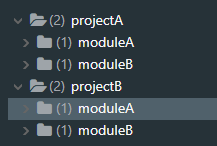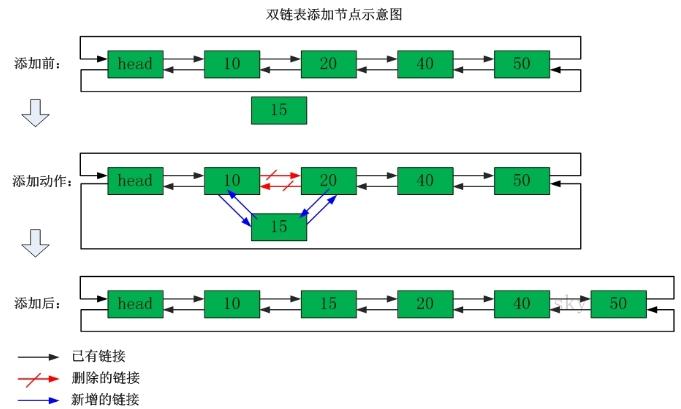concept
Brief introduction to Redis
redis is a nosql database
nosql: not only sql, that is, a non relational database
Why learn nosql
Memory storage is 100000 times faster than disk reading of traditional relational database
The bandwidth of memory is also much higher than that of disk
Mainstream nosql database

Advantages of Redis
It provides rich data types and makes no difference in data storage. However, compared with memcache, it does not need to obtain all the data before parsing
Redis application scenario
Core: store data that does not change frequently and is not afraid of loss
1. Cache
2. Task queue (basically not used)
3. Data expiration processing (completed by using the expire command of redis)
4. session isolation of distributed cluster architecture
5. List of online friends in chat room
6. Ranking list (completed by using the sorted set score related commands of redis)
7. Access statistics (using commands such as incr calculation of redis)
Redis key naming specification
1. The length of the key is not longer than 1024 bytes (1m), and a kv pair can store 512mb at most
2. A key can be grouped with a colon
For example, project name: module name: key name
set projectA:moduleA:key1 testvalue set projectA:moduleB:key1 testvalue set projectB:moduleA:key1 testvalue set projectB:moduleB:key1 testvalue
Client display style

Redis data type
string
Usage scenario:
1. Cache
2. Self increasing id
3. Counter
list
hash
set
sorted set
Redis command
string type command
> set name wwl OK > get name wwl
hash type command
hset and hget
127.0.0.1:6379> hset person id 1 (integer) 1 127.0.0.1:6379> hset person name wwl (integer) 1 127.0.0.1:6379> hset person age 33 (integer) 1 127.0.0.1:6379> hget person id "1" 127.0.0.1:6379> hget person name "wwl" 127.0.0.1:6379> hget person age "33"
hmset and hmget
127.0.0.1:6379> hmset user id 1 username hugo password 666 OK 127.0.0.1:6379> hmget user id username password 1) "1" 2) "hugo" 3) "666"
Gets the length (number) of the field in the hash table
127.0.0.1:6379> hlen user (integer) 3
Delete one or more fields in the hash table
127.0.0.1:6379> hdel user username password (integer) 2
Delete the entire hash object
127.0.0.1:6379> del user (integer) 1 127.0.0.1:6379> keys * 1) "person"
Gets all fields and values in the specified hash table
127.0.0.1:6379> hgetall person 1) "id" 2) "1" 3) "name" 4) "wwl" 5) "age" 6) "33"
Get all fields in the hash table / get all values in the hash table
127.0.0.1:6379> hkeys person 1) "id" 2) "name" 3) "age" 127.0.0.1:6379> HVALS person 1) "1" 2) "wwl" 3) "33"
Examples of application scenarios: for example, store commodity information [commodity id, commodity name, commodity price]
127.0.0.1:6379> hmset product product_id 1 product_name Iphone product_price 10000 OK 127.0.0.1:6379> hmget product product_id product_name product_price 1) "1" 2) "Iphone" 3) "10000"
list type command
Introduction to list type storage structure
The underlying storage structure of the list data type in redis is a two-way linked list


Use of list command
Application scenario: sequence related operations, such as caching user comments
lpush is the same as lpop(rpush and rpop). The pop operation is to get and delete the value
127.0.0.1:6379> lpush pipe a b c (integer) 3 127.0.0.1:6379> lpop pipe "c" 127.0.0.1:6379> lpop pipe "b" 127.0.0.1:6379> lpop pipe "a"
Returns the number of elements in the list corresponding to the specified key
127.0.0.1:6379> llen pipe (integer) 0
Get elements in the list by index
127.0.0.1:6379> rpush pipe a b c (integer) 3 127.0.0.1:6379> lindex pipe 0 "a"
Inserts an element before or after an element in the list
127.0.0.1:6379> linsert pipe before a xxoo (integer) 4 127.0.0.1:6379> lindex pipe 0 "xxoo"
Note: redis supports forward and reverse indexing, that is, - 1 represents the penultimate position
set type command
characteristic:
1. Disorder
2. Unique
3. Intersection, union and difference operation
Application scenario
1. Voting records
2. Common friends (intersection), classification labels, etc
3. Possible acquaintances (difference set)
Command of type sorted set
General commands of Redis
Redis multi database
Publish and subscribe to Redis
Redis persistence mechanism
RDB and AOF
redis data is stored in memory, and the data in memory is lost after power failure, so it needs to be persisted
There are two persistence methods in redis
1. RDB (redis database): by default, the data in redis memory is snapshot at regular intervals and stored in dump.rdb file on disk
2. AOF (append only file): records the instruction set of each operation
Advantages and disadvantages of RDB:
advantage
Small storage space
Disadvantages:
RDB is easy to cause data loss, such as sudden power failure before taking a snapshot, and the data has not been persisted to the disk
It is not convenient for database reconstruction, because only the results are recorded and there is no way to rollback
AOF advantages and disadvantages
advantage
1. Data is not easy to lose
2. The change process of database data can be recorded to facilitate database reconstruction and rollback
shortcoming
The files storing instruction sets and will be larger and larger
Persistent mode configuration
re.conf
Jedis
Address: https://github.com/xetorthio/jedis Document address:http://xetorthio.github.io/jedis/
Basic use
import redis.clients.jedis.Jedis;
import java.util.HashMap;
import java.util.Map;
public class Demo01$Jedis {
public static void main(String[] args) {
Jedis jedis = new Jedis("192.168.200.170", 6379);
// Get the specified key
String name = jedis.get("name");
// Set a hash key to the redis database
Map<String, String> fieldsMap = new HashMap<>();
fieldsMap.put("id", "666");
fieldsMap.put("name", "hugo");
fieldsMap.put("age", "33");
jedis.hmset("person", fieldsMap);
System.out.println(name);
// Release connection
jedis.close();
}
}
Encapsulation of Jedis connection pool
Tool class encapsulation
import redis.clients.jedis.Jedis;
import redis.clients.jedis.JedisPool;
import redis.clients.jedis.JedisPoolConfig;
import java.util.ResourceBundle;
/**
* @author Wei Wenlong
*/
public class JedisUtils {
static JedisPool jedisPool;
static {
ResourceBundle jedisConfig = ResourceBundle.getBundle("JedisConfig");
Integer maxTotal = Integer.valueOf(jedisConfig.getString("jedis.MaxTotal"));
Integer maxIdle = Integer.valueOf(jedisConfig.getString("jedis.MaxIdle"));
Integer maxWaitMillis = Integer.valueOf(jedisConfig.getString("jedis.MaxWaitMillis"));
Integer minIdle = Integer.valueOf(jedisConfig.getString("jedis.MinIdle"));
String host = jedisConfig.getString("jedis.hsot");
Integer port = Integer.valueOf(jedisConfig.getString("jedis.port"));
JedisPoolConfig jedisPoolConfig = new JedisPoolConfig();
jedisPoolConfig.setMaxTotal(maxTotal);
jedisPoolConfig.setMaxIdle(maxIdle);
jedisPoolConfig.setMaxWaitMillis(maxWaitMillis);
jedisPoolConfig.setMinIdle(minIdle);
jedisPool = new JedisPool(jedisPoolConfig, host, port);
}
public static Jedis getJedis() {
return jedisPool.getResource();
}
}
test
import redis.clients.jedis.Jedis;
import redis.clients.jedis.JedisPool;
import redis.clients.jedis.JedisPoolConfig;
public class Demo03$JedisPoolWithUtils {
public static void main(String[] args) {
Jedis jedis = JedisUtils.getJedis();
String name = jedis.get("name");
System.out.println(name);
}
}